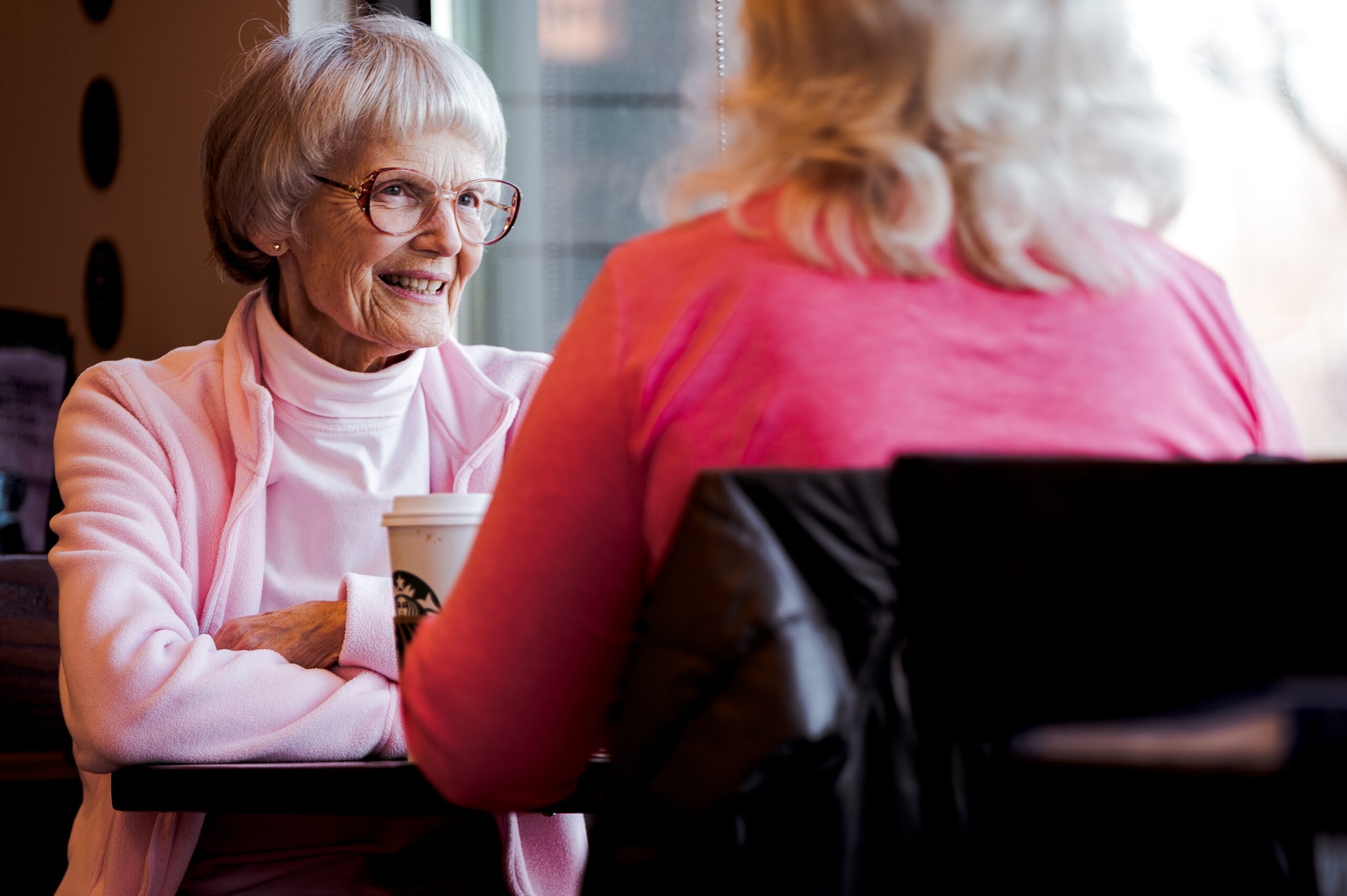Understanding Anosognosia or a Lack of Awareness in Dementia Patients

Even after forgetting to bathe, missing appointments or burning food on the stove, many older adults living with Alzheimer’s disease or another cognitive impairment will insist that they don’t need help. They may hide their dementia symptoms, give excuses to explain behaviour you are concerned about and become angry or defensive when you suggest they need more support.
Caregivers often mistake this response for denial, stubbornness or embarrassment around their diagnosis, but in fact, damage to the brain can make it difficult for dementia patients to recognize their impairment. If a person in your care is sometimes agreeable and other times appears to completely forget that they are sick, they may be experiencing anosognosia.
What is Anosognosia?
The Greek word anosognosia (pronounced ah-no-sog-NOH-zee-uh) is used in medicine and literally means, “without knowledge of disease”. When this occurs, damage to certain parts of the brain caused by Alzheimer’s disease, other types of dementia, traumatic brain injury, brain tumours, stroke or mental illness can make a person unaware of their condition.
This lack of awareness can fluctuate over time and even within the same day which can therefore cause serious safety and behavioural challenges. Understanding anosognosia and how it affects dementia patients can help caregivers better connect with their loved ones and use positive strategies to support their care.
Care Strategies For Caregivers
If you are caring for a loved one with dementia who is experiencing the symptoms of anosognosia, it is to be expected that you will feel frustrated and helpless at times. How can you convince someone that they are unable to drive, that they need to take daily medications or require support with household duties if they don’t even know that they are sick?
As with other dementia symptoms, having the right tools and strategies will help you stay calm and keep your loved one safe. You should also inform other members of your care team about this symptom to help them understand that your loved one’s resistance isn’t intentional.
The LEAP Model
This communication approach, which stands for Listen, Empathize, Agree and Partner, is designed to help you connect with people who are unable to understand that they are ill. Here are some helpful strategies for each step:
LISTEN
Let your loved one know that you hear what they are saying by repeating exactly what they just said. For example, if they comment, “I’m so frustrated that everyone thinks that I can’t take care of myself,” respond with, “It sounds like you are frustrated that everyone thinks you can’t take care of yourself.”
EMPATHIZE
Simply acknowledging your loved one’s feelings if they become sad, frustrated or angry can help to diffuse the situation. Use affection, reassurance and a calm and friendly voice. “I’m sorry. I can see that you are upset that you can’t drive the car today.” Then try to redirect their attention to something they enjoy like, “Let’s go get something to eat.”
AGREE
It’s a waste of time and effort to try to prove to your loved one that they are sick. Doing this will only make them more angry and resistant to your support. Instead, discreetly make any changes around the home that are necessary to keep them safe. Avoid arguments by walking away to gain your composure then return ready to find something you can both agree on. The idea here is connection over correction.
PARTNER
Work with your loved one on certain activities or tasks by offering a compromise that includes a positive incentive. Try, “Let’s clean the house together so we have more time to watch your favourite show.” Or, if you’re worried about them getting lost say, “It’s a beautiful day outside. Let’s go for a walk together.” Their independence is still important so before stepping in, always ask yourself if what the person is doing is unsafe. If not, try to avoid intervening.
One of the most helpful tips for responding to anosognosia is to remember that you cannot change the person’s behaviour. They have a brain disorder that will shape their decisions and actions. As a caregiver you can only accommodate your loved one’s behaviour—realizing that what works today may not work tomorrow—and do your best to manage your own response. Listening, acknowledging feelings, staying calm and always focused on safety will all help you deal with this difficult symptom.
If you think the person in your care is experiencing anosognosia, reach out to their primary care provider. They will help you find specific strategies that will work best for you and your loved one. If you are feeling overwhelmed, a paid caregiver can assist you. Contact VHA Home HealthCare’s Enterprise Health Solutions team at (416) 489-2500 ext. 4649 or by email at ehs@vha.ca for information on how we can help.
For more information on dementia care, visit: https://www.vha.ca/services/dementia-care/
If you found this article helpful, you may also want to read:
